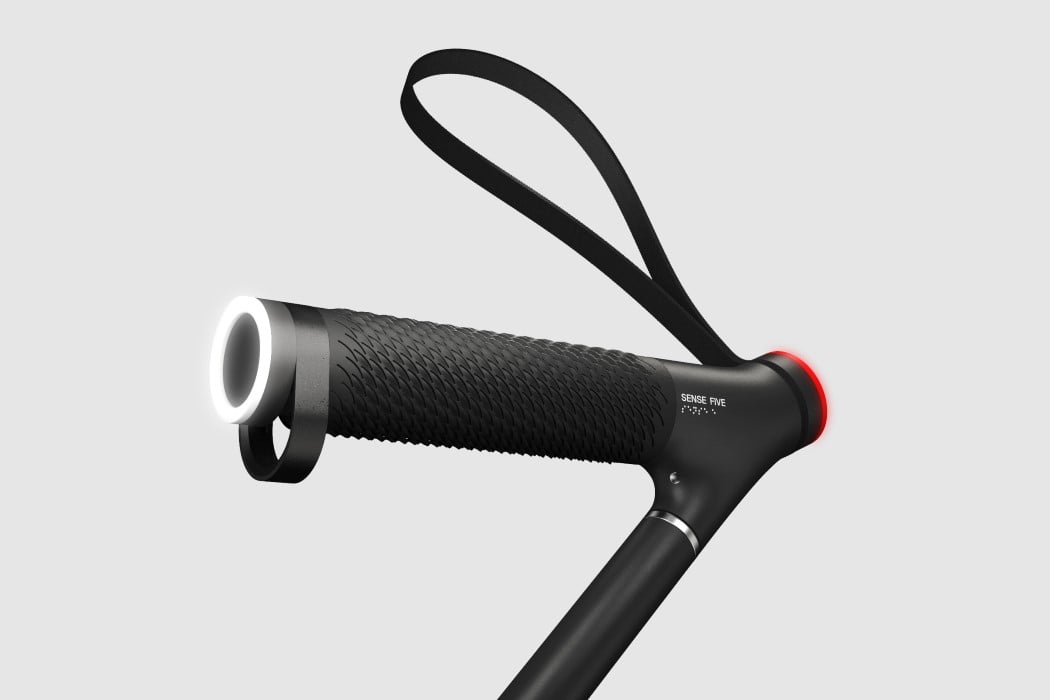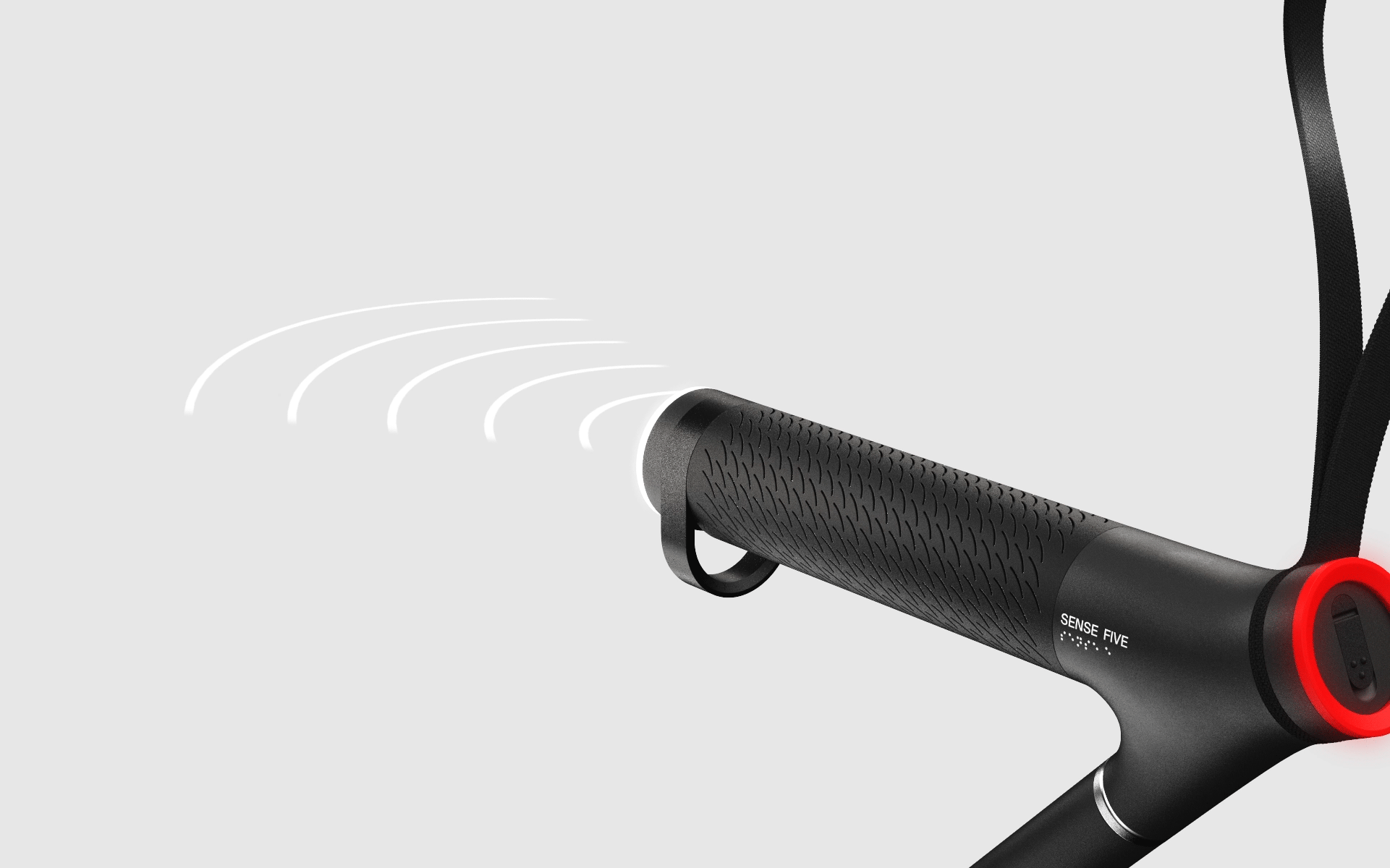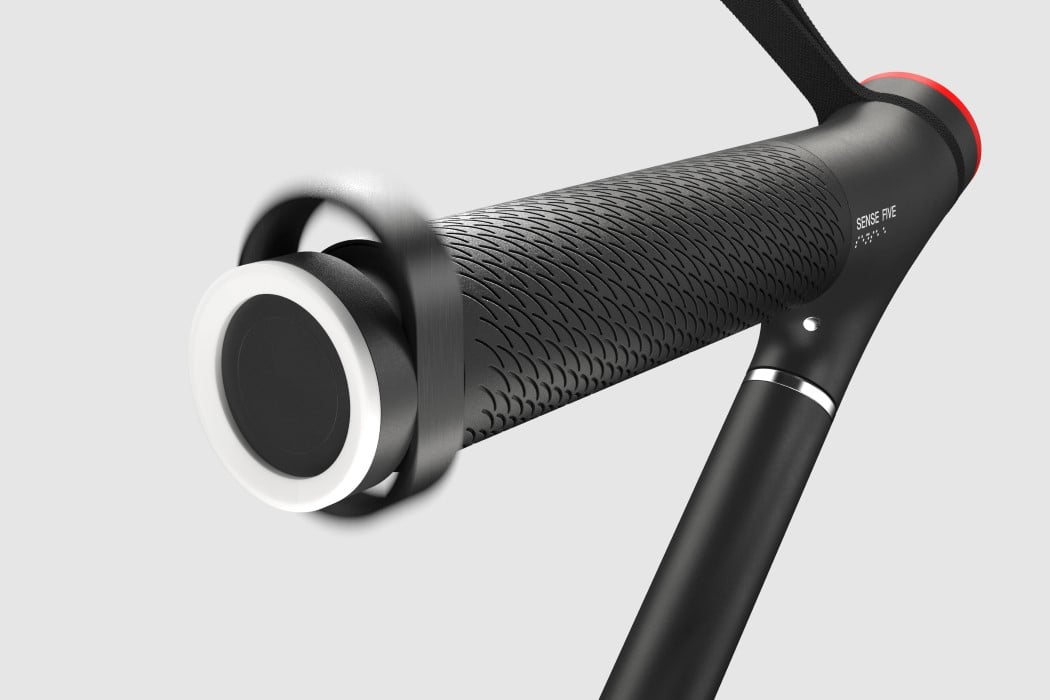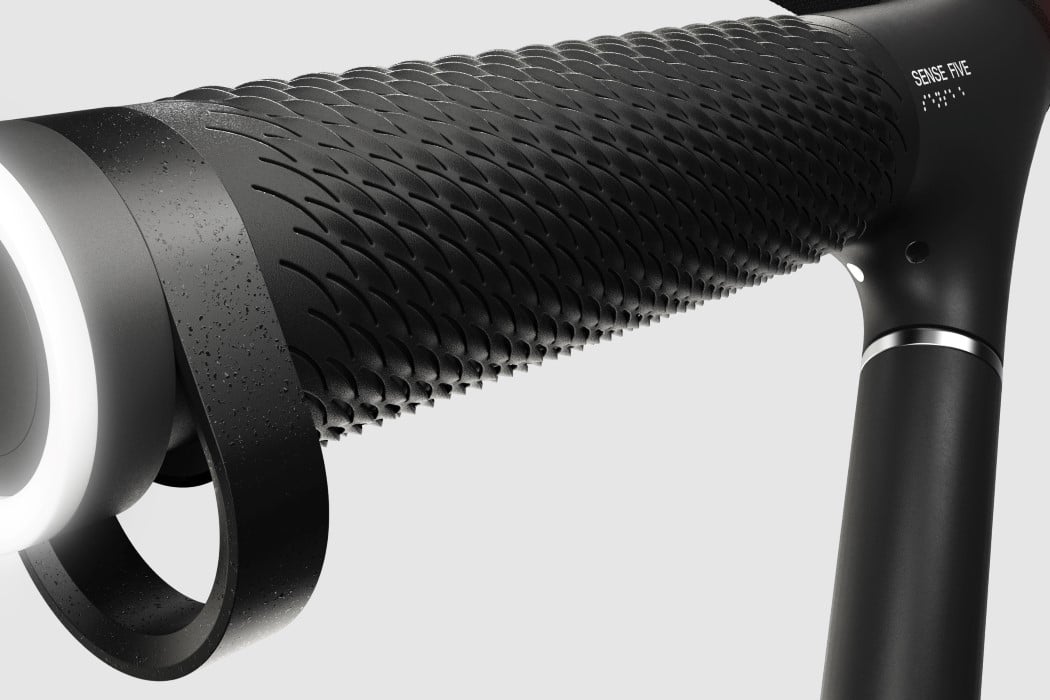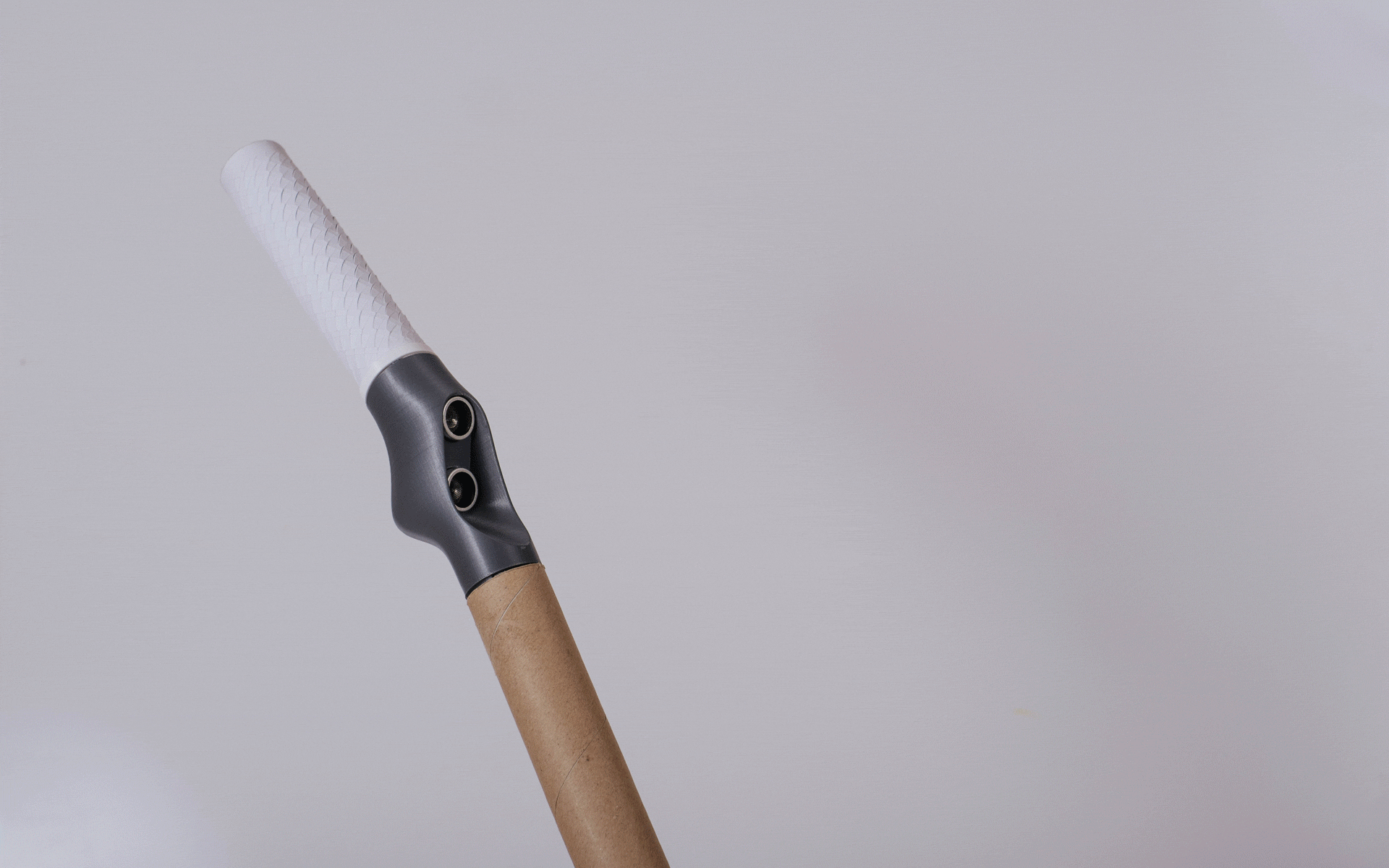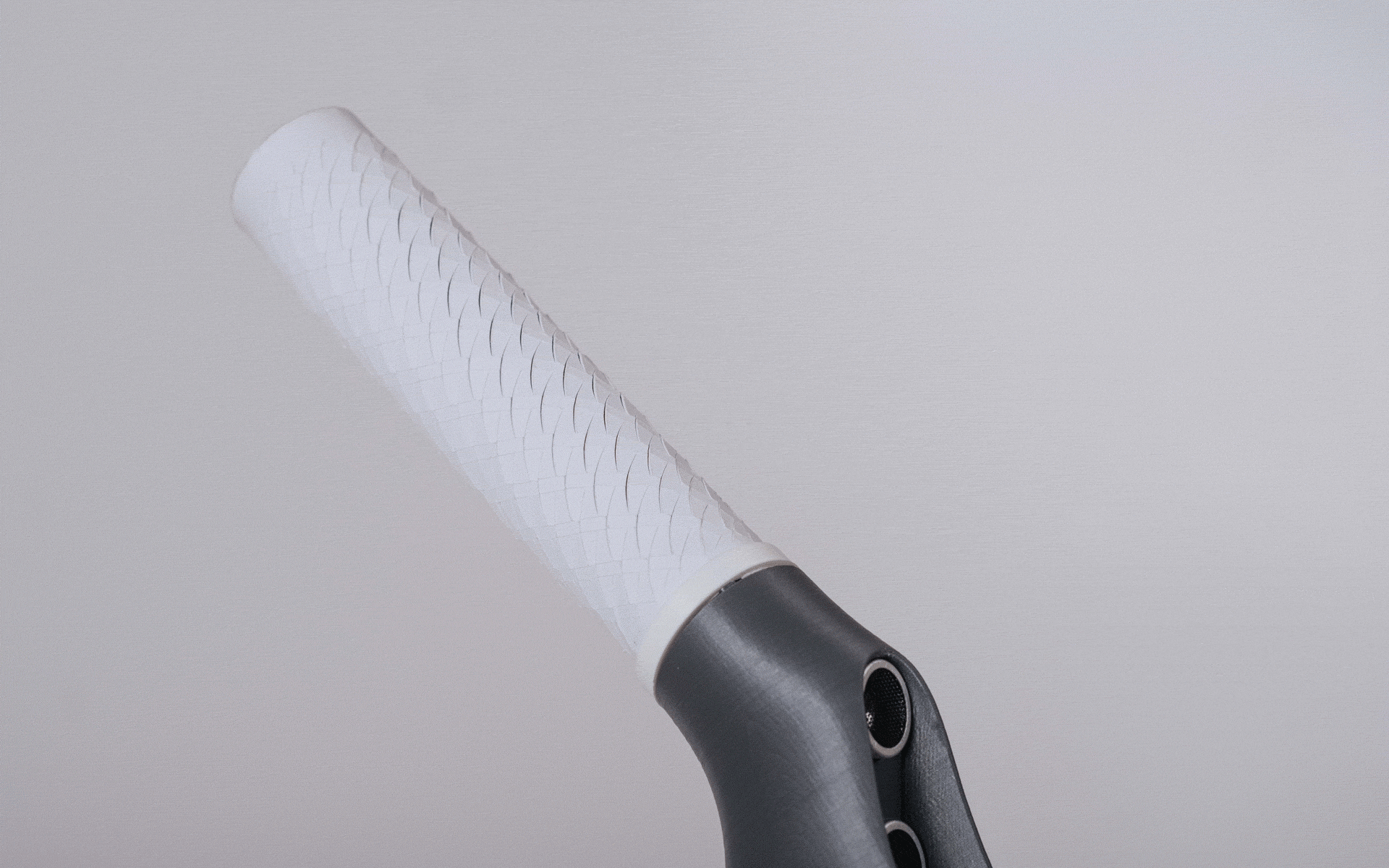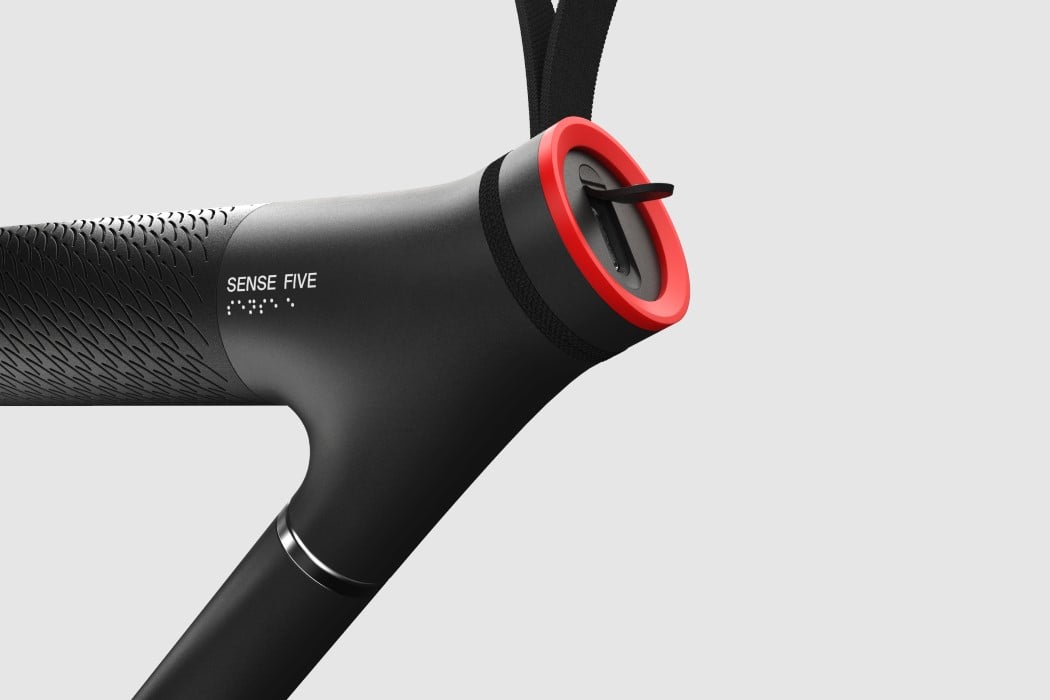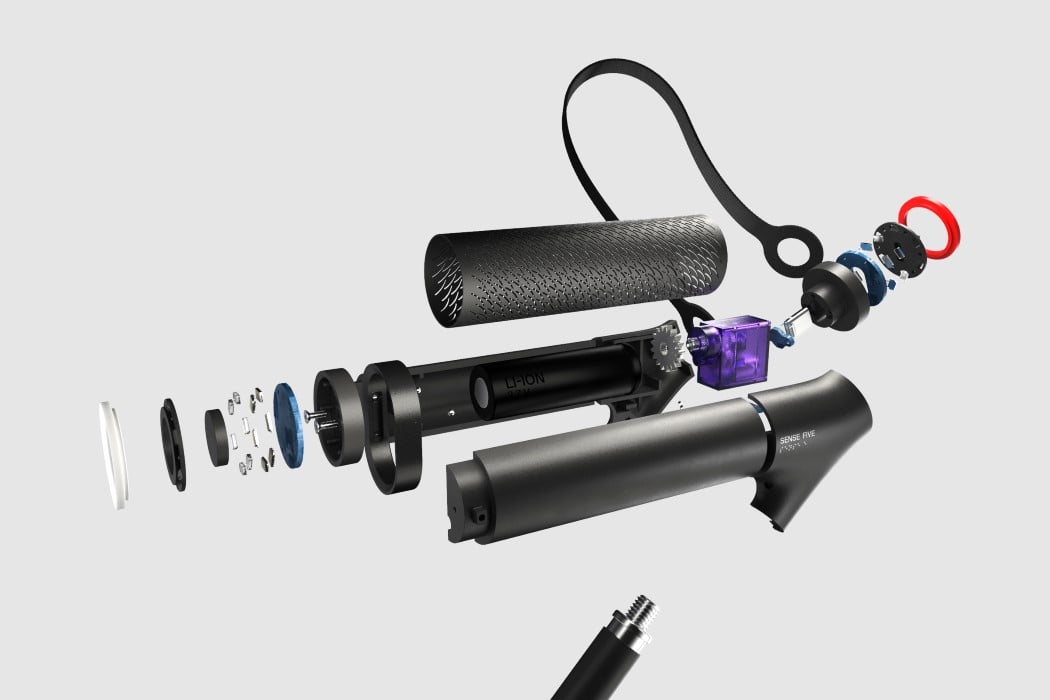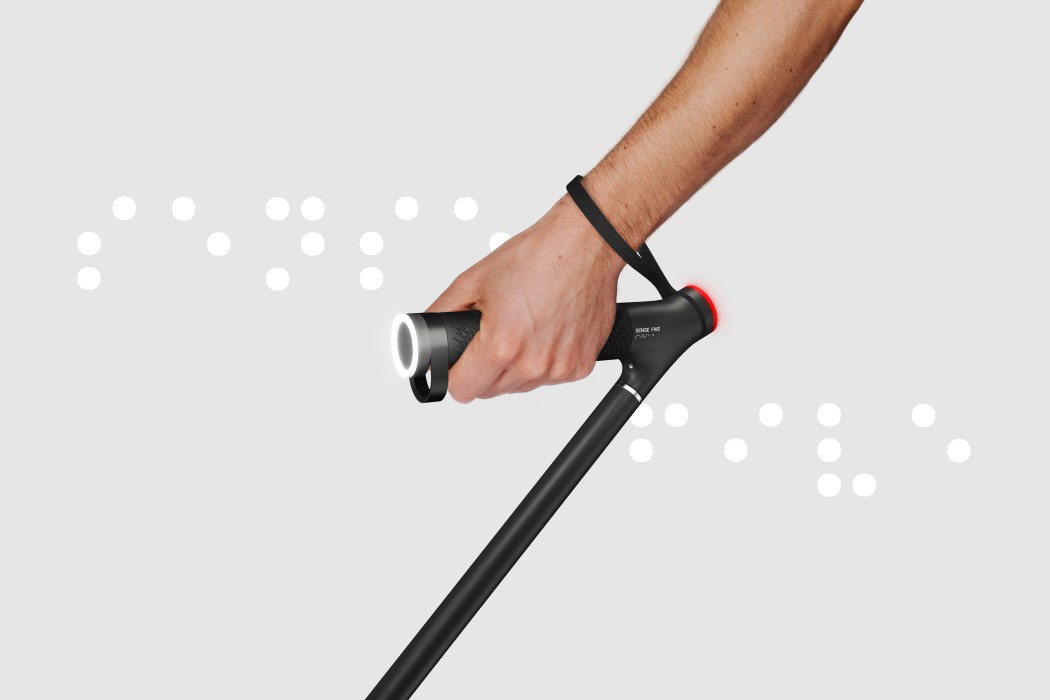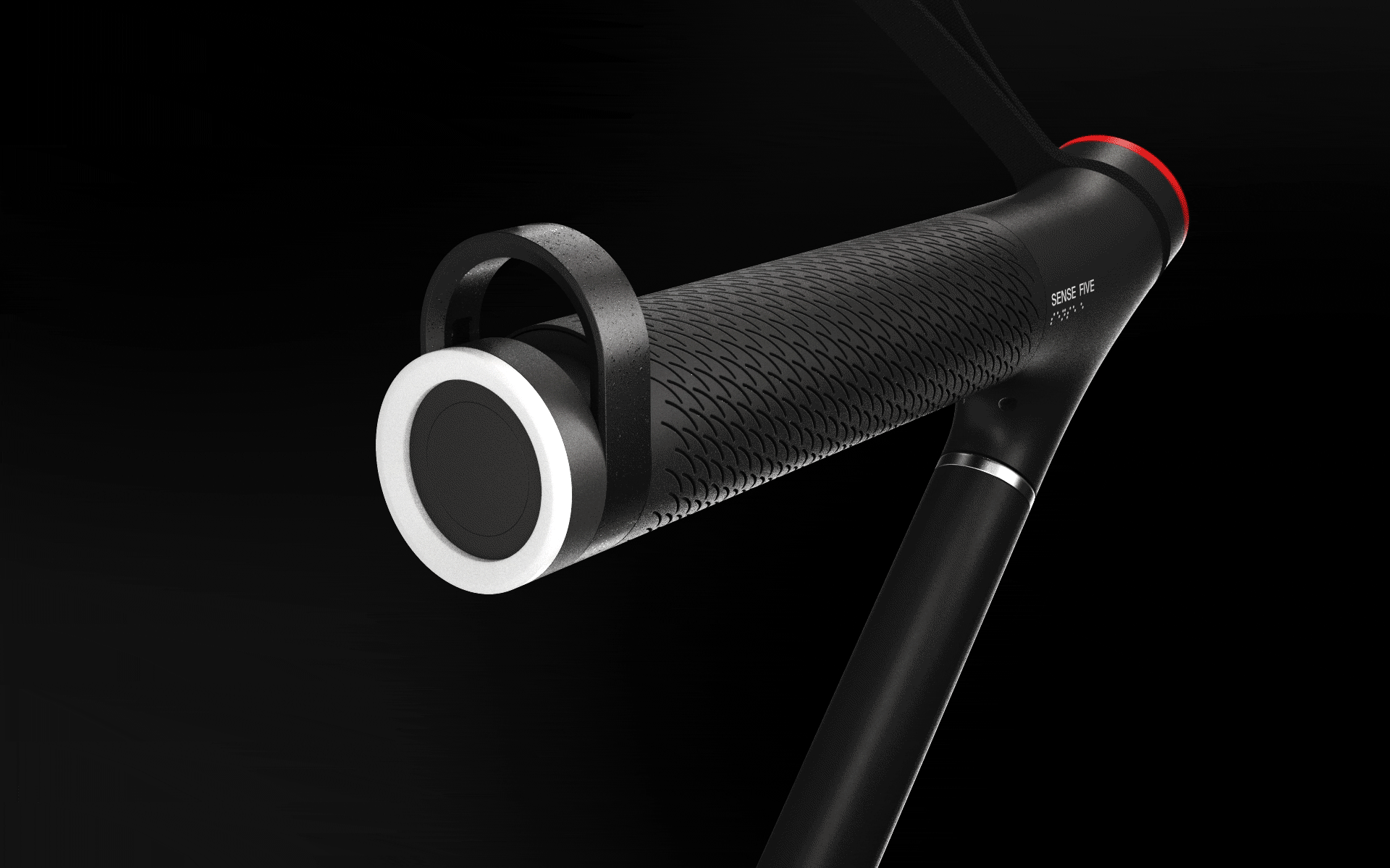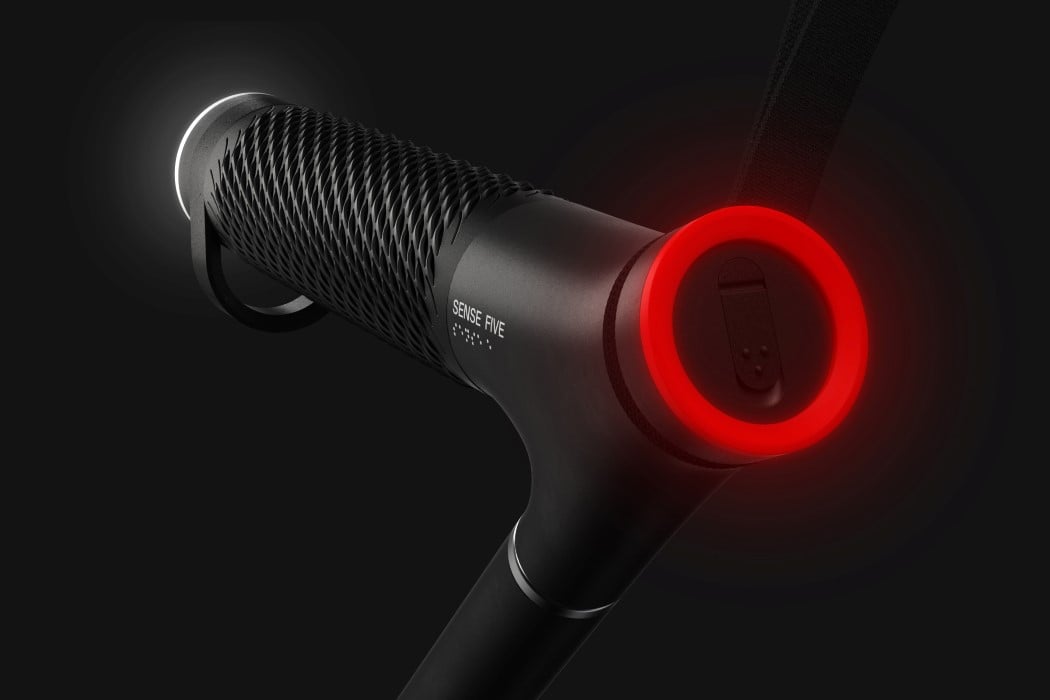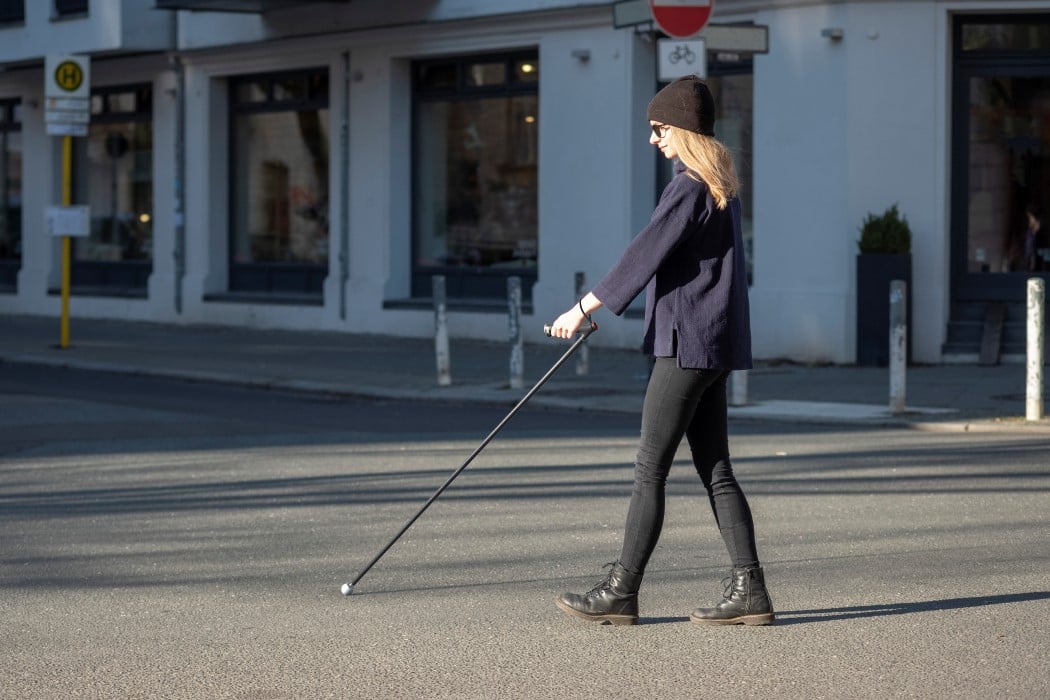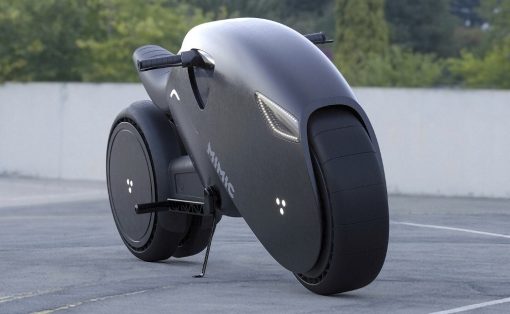The Sense Five may look like a regular walking stick, but it’s to walking stick what the smartwatch is to mechanical timepieces. With smart sensors integrated into its handle, the Sense Five has its way of communicating with its user, allowing them to be aware of what’s around them. It all starts with the way the Sense Five is shaped. Its unique ‘7’ shaped format comes with a reason, helping the visually impaired easily navigate their surroundings. The stick’s angled design allows its user to instinctively hold it the right way. The handle is held horizontally, and the stick naturally leans forward, allowing the user to tap their surroundings as they navigate through spaces. A camera on the front actively captures images, recognizing objects and obstacles, while a simple switch allows you to toggle a torch to use the stick at night. When the camera identifies something worth alerting the user about, it communicates with the user through the handle.
The handle has to be by far one of my favorite details. It’s elegant, slim, and comes with a unique dynamic surface that ‘flares up’ on command, with an almost animal-like instinct. When the camera notices an obstacle near the user, the handle’s 3D surface comes to life, alerting the user. The tactile response is incredibly easy to identify (especially given that the user’s palms are perpetually in contact with the handle), and is much more effective than an audio cue, which could get missed in a noisy environment or could be disturbing in a quiet one. The way the handle communicates with the user is incredibly stealthy, effective, and almost reptilian. The handle, through its dynamic skin, can even communicate a low-battery status to the user, prompting them to charge the Sense Five via a standard USB-C port on the back.
However, the Sense Five isn’t just a walking stick for its owner. It can help communicate the user’s presence to others around them. The torchlight on the front is accompanied by a red taillight on the back that helps people spot the stick and user in low-light settings. Incredibly effective at night (especially when you need to cross the road), the torch and taillight are yet another example of features that go above and beyond to keep the visually impaired user safe and sound as they navigate through life.
Designer: Werteloberfell
